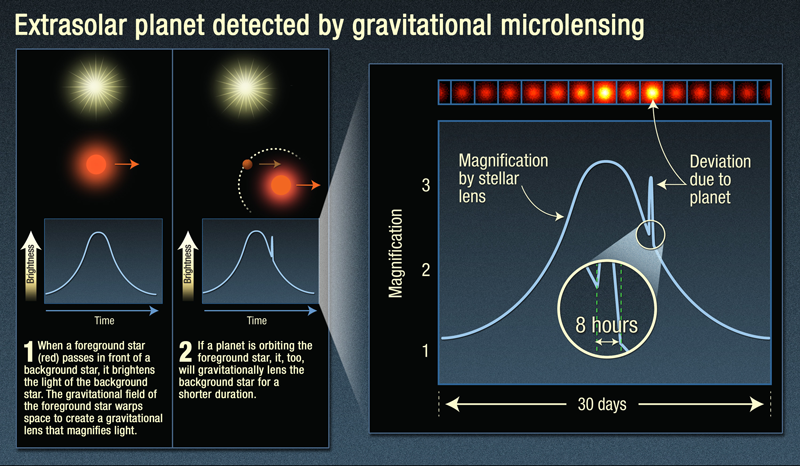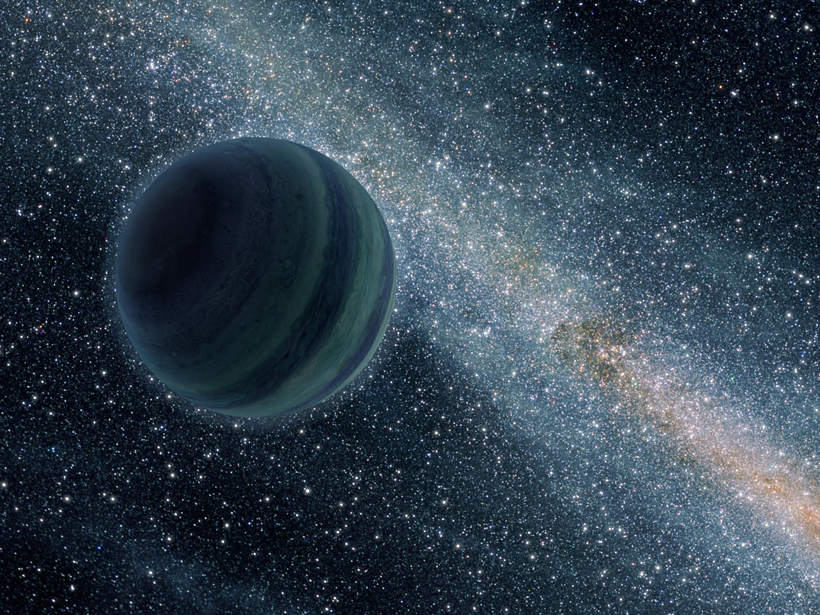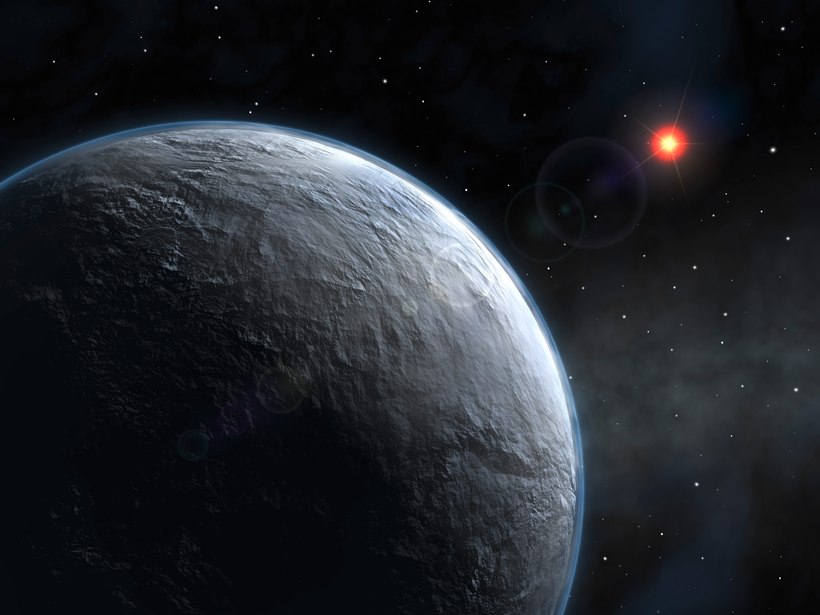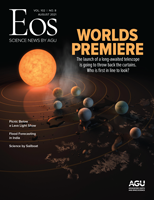When astronomers gathered to reveal “new planets” at a press conference in January 1996, the world paid attention. Hundreds of journalists and fellow astronomers packed the meeting room, where presenters confirmed the identity of one exoplanet and reported the discovery of two others—the first planets known to orbit other Sun-like stars. The story made the front pages of major newspapers (“Life in Space? 2 New Planets Raise Thoughts,” wrote the New York Times), appeared in magazines (including a Time cover story), and aired on television news (including CNN) soon after.
A quarter of a century later, exoplanets still generate headlines—sometimes. With the number of confirmed planets well beyond 4,000 and more being added to the list almost weekly, however, a sort of exoplanet fatigue has set in. Only the most spectacular discoveries show up in our daily newsfeeds: potentially habitable planets, for example, or “extreme” worlds—those that are especially hot or young or blue or close to our solar system.
Yet some of the topics in the penumbra of exoplanet discussions are just as fascinating as those in the spotlight. They remain in the shadows in part because they involve objects that are rare or that are difficult to find and study with current technology. The recently named field of necroplanetology, for example, studies planets orbiting dead or dying stars, providing the only direct look at the innards of exoplanets. Gravitational microlensing allows astronomers to detect planets at greater distances than once thought possible. Several groups of researchers are developing instruments or small spacecraft to look at Earth as an exoplanet analogue, showing us what our planet would look like to an astronomer many light-years away. And the International Astronomical Union (IAU) has begun the long process of bestowing proper names on exoplanets—a process that simply may not have had enough time to filter into the consciousness of either professional astronomers or the public.
“We’ve discovered a lot of weird things,” said Laura Mayorga, an exoplanet researcher and postdoctoral fellow at the Johns Hopkins University Applied Physics Laboratory (APL). “When we first started studying exoplanets, we found that they got stranger and stranger. They put all of our understanding to the test.… Finding something new throws everything up in the air, and it has to resettle. That makes this a really exciting time.”
Death of a Planet
Although it sounds like something from a Syfy channel original movie, necroplanetology is the newest branch of exoplanet studies—a novelty that involves intrinsically rare targets. The term was coined by Girish Duvvuri, then a student working with Seth Redfield at Wesleyan University in Connecticut, in a 2020 paper. “We’re proud of the name,” said Redfield. “It’s a great way to describe the systems we’re studying. It has a small number of practitioners, but the larger community is just starting to look into this topic.”
The name was originally applied to the study of dead or dying planets around white dwarfs, which are the hot but dead cores of once normal stars. A typical white dwarf is at least 60% as massive as the Sun but only about as big as Earth. The size of white dwarfs makes it easier to detect the remains of pulverized planets as they transit, passing across the face of the star and causing its brightness to dip a tiny bit.
Starlight filtering through an exoplanet’s atmosphere during a transit would reveal its composition. (Astronomers have used the same technique to measure the atmospheres of planets transiting much larger main sequence stars, which are in the prime of life.) “What we started finding first was not whole planets but planetary debris,” Redfield said.
“All those clues made it clear that planets can exist around white dwarfs. They can be destroyed by white dwarfs as well.”
In particular, using early observations from the K2 mission of the planet-hunting Kepler space telescope, they found WD 1145+017, a white dwarf about 570 light-years from Earth. The star’s light dipped several times in a pattern that repeated itself every few hours. The researchers concluded that they were seeing the debris of a planet that had been shredded by its star’s gravity—probably chunks or piles of rock surrounded by clouds of dust.
Observations with large ground-based telescopes revealed calcium, magnesium, iron, and other heavy elements in the white dwarf’s spectrum. Such heavy elements should quickly sink toward the core of a white dwarf, where they wouldn’t be detected. Their discovery suggested that the elements had been deposited quite recently, as rubble from a disrupted planet (or planets) spiraled onto the white dwarf’s surface.
“All those clues made it clear that planets can exist around white dwarfs,” said Redfield. “They can be destroyed by white dwarfs as well. The tidal forces are quite extreme, so they can break apart and grind up a planet.… As that material accretes onto the white dwarf, we’re actually learning about the innards of the planets.”
Such a planet may have been born far from its host star and migrated close enough to be destroyed. Astronomers know that such migrations are possible because they have discovered a few hundred “hot Jupiters”: worlds as massive as the largest planet in the solar system but so close to their stars that their upper atmospheres are heated to hundreds or thousands of degrees. Some of these planets are being eroded by stellar radiation and winds, perhaps marking the beginning of the end for worlds that could be subjects for future necroplanetologists.
Stars That Take a Dip
Despite expectations of a bounty of such white dwarf systems, Redfield said, they seem to be rare. (A recent study found evidence of one intact giant planet around one white dwarf.) Astronomers have found evidence of similar processes at work around main sequence stars, though.
The best-known example is KIC 8462852 (also known as Boyajian’s Star), about 1,470 light-years from Earth. Large, but irregular, dips were discovered in the brightness of the star, which is bigger, hotter, and brighter than the Sun. Possible explanations for the decrease included the panels of a “megastructure” built by an advanced civilization orbiting the star—an idea (since abandoned) that generated plenty of headlines.
Astronomers have discovered other examples of “dipper” stars as well. Edward Schmidt, a professor emeritus at the University of Nebraska–Lincoln, reported 15 slow dippers, whose light varies over long timescales, in study released in 2019. He said he plans to publish details on 17 more in an upcoming paper.
One or more moons could be snatched away as a planet falls into its star. The planet essentially hands its moons to the star—they’re orphaned exomoons.
The stars all have similar masses and temperatures, which suggests that their dipping patterns share a common explanation, Schmidt said. “It could be caused by disintegrating planets—that looks promising so far.” He’s looking through published spectra of the stars to see whether their surfaces are polluted by the residue of planets, which could solidify the idea.
A couple of systems discovered by Kepler seem to add credence to the hypothesis. Kepler-1520b, for example, shows dips in luminosity of up to 1.3%. A ground-based study found that the dimming is caused in part by clouds of dust grains, providing “direct evidence in favor of this object being a low-mass disrupting planet,” according to 2015 paper. And K2-22, discovered in Kepler’s K2 mission, appears to be a disintegrating planet more massive than Jupiter but only 2.5 times the diameter of Earth.
Another study suggested a slightly altered explanation for Boyajian’s Star and other dippers: disintegrating exomoons. Researchers suggested that one or more moons could be snatched away as a planet falls into its star. “The planet essentially hands its moons to the star—they’re orphaned exomoons,” said Brian Metzger, one of the study’s authors and a physicist at Columbia University and senior research scientist at the Flatiron Institute.
Stellar radiation could be eroding the surviving moons, releasing solid grains of material that then form a clumpy disk around the star. So the young field of necroplanetology may need a new subfield: necrolunarology.
A Second Chance at Life
For some planets, though, the death of a star isn’t necessarily the end—it may be the beginning. The first confirmed exoplanets, discovered 3 decades ago, orbit a pulsar, a dead star whose composition is more exotic than a white dwarf. A pulsar is a rapidly spinning neutron star, the collapsed core of a massive star that exploded as a supernova. As the neutron star spins, it emits pulses of energy that form an extremely accurate clock. The gravitational tug of a companion alters the timing of the pulses a tiny bit, revealing the presence of an orbiting planet.
The first identified pulsar planets orbit PSR B1257+12. Astronomers have since discovered a handful of others, but most searches have come up empty. An examination of more than a decade of observations made by the North American Nanohertz Observatory for Gravitational Waves (NANOGrav), a project that is using pulsar timing to hunt for gravitational waves, for example, found no evidence of planets around a set of 45 fast rotating pulsars. The search could have revealed planets as light as the Moon in orbital periods of 1 week to almost 5 years, said Erica Behrens, a graduate student at the University of Virginia who conducted the study during an internship at the National Radio Astronomy Observatory.

“Since we’ve seen so few, it seems like they’re pretty rare,” Behrens said, which may explain why they’ve received so little attention since the early discoveries. “They must have formed after the star has blown up. No planet that existed while the star was still living would be able to survive the supernova.”
Theoretical work hints that instead of supernova survivors, pulsar planets may be “zombies,” born from the debris of companion stars.
Metzger and Ben Margalit, also of Columbia, have suggested, for example, that the companion could be a white dwarf. The extreme gravity of the neutron star tears the white dwarf apart—perhaps in a matter of seconds—and the debris forms a disk around the pulsar. Some of the material in the disk falls onto the neutron star while the outer edge of the disk expands and cools. Solid material in those precincts may condense to form solid bodies, which then merge to make planets.
The scenario would explain the frequency of pulsar planets, which is roughly equal to the frequency of neutron star–white dwarf binaries, Metzger said. It would not, however, explain the birth of a pulsar planet that’s been discovered in a globular cluster, where the density of stars is extremely high. “You’d have to invoke more exotic interactions,” which scientists are still trying to model, he said.
A Rogues’ Gallery of Exoplanets
Although most exoplanets have been discovered through transits or radial velocity measurements, which detect a back-and-forth shift in the wavelengths of starlight caused by the pull of orbiting planets, a few stragglers have been found through other methods. Such methods are difficult to apply, or they’re looking for objects or phenomena that are rare, so they’ve yielded far fewer discoveries than the most favored methods.
Astrometry, for example, precisely measures a star’s position to detect tiny wobbles caused by the gravitational tug of orbiting planets. Such measurements are hard to make and have yielded only one or two discoveries. However, astronomers expect observations by the Gaia spacecraft, which is plotting the positions and motions of more than 1 billion stars, to yield thousands of new Jupiter-sized exoplanets in relatively wide orbits, which would create a whole new population for study.
The most successful of the lesser known techniques, however, has been gravitational microlensing which has revealed more than 100 planets. “It’s very complementary to other techniques,” said Matthew Penny, an astronomer at Louisiana State University. “You get an instant detection of some very distant planets that would take decades to find with other techniques.”

Gravitational microlensing relies on general relativity, which posits that if a star or planet passes in front of a more distant star, the intervening object’s gravity bends and magnifies the background star’s light, creating a double image. If the alignment is perfect, it creates a bright circle of light known as an Einstein ring. (The same technique is used on a larger scale to study galaxies and quasars billions of light-years away.)
The length and magnification of a lensing event allow astronomers to calculate the intervening object’s mass and, in the case of a planet, its distance from its star. Astronomers have measured planet-star separations of up to more than 10 astronomical units (AU), which is far wider than with other techniques.
Microlensing can reveal planets that are thousands of light-years away (the current record holder, according to the NASA Exoplanet Archive, is at 36,500 light-years, many times farther than planets discovered with other techniques). Microlensing allows astronomers to study planets in regions of the Milky Way well beyond our own stellar neighborhood, including the central galactic bulge.
Perhaps most important, microlensing is the only technique that can reveal rogue planets, which travel through the galaxy alone, unmoored to any star.

Rogues might form as stars do, from the gravitational collapse of a cloud of gas and dust. That process would form only massive planets—a minimum of 5 times the mass of Jupiter, Penny said. “So far,” however, he explained, “the main results are that there are not a lot of free-floating giant planets out there,” with only a handful of confirmed discoveries to date.
Most rogues probably form from the disk of material around a star, then escape. “It could be an interaction between planets,” Penny said. “If you form a lot of planets in a disk, the disk keeps order until it dissipates. But once the damping effect of the disk is gone, all hell breaks loose,” and gravitational battles can sling planets into interstellar space. There may be billions of these smaller castaway worlds.
Although three searches are dedicated to finding planetary microlensing events, they’re restricted by daylight, clouds, and the other disadvantages of looking at stars from the ground.
As with astrometry discoveries and the Gaia mission, though, a space telescope may greatly expand the numbers of confirmed exoplanets. The Nancy Grace Roman Space Telescope, which is scheduled for launch later in the decade, could find 1,400 bound exoplanets and 300 rogues during its lifetime, Penny said. The telescope’s mirror will be the same size as that of Hubble Space Telescope, but with a field of view 100 times wider. That field of view will allow Roman to see a large area toward the galactic bulge—the preferred target for microlensing planet searches. Current plans call for it to scan the region six times for 72 days per session.

“It’s the ideal platform for doing microlensing because you can never predict when a lensing event will occur, and planetary events are very short,” Penny said.
One Telescope, Many Exoplanet Studies
Roman is expected to help with other exoplanet studies as well. As a technology demonstration, it will carry a coronagraph, which blocks the light of a star, allowing astronomers to see the light of planets directly. “It’ll try to get down to Jupiter-like exoplanets that are closer than Jupiter is now,” said Mayorga. “It might get as close as 1 AU for a Sun-like star.”
Current images of exoplanets, whether from telescopes in space or on terra firma, generally cover a single pixel. To better understand those pictures, scientists use the planets of our solar system as exoplanet analogues. In essence, they take the beautiful pictures of Earth and the other worlds that fill Instagram pages and squish them down to a pixel. “That sets a ground truth for the weird things we find in the universe,” Mayorga said. “It allows us to connect that disk-integrated light to the underlying cloud bands or continents or oceans. It’s the only place we can make that connection.”
Mayorga and colleagues used Cassini images snapped during a flyby of Jupiter as one analogue. They saw how the planet’s brightness and color changed as viewed under different Sun angles or as the Great Red Spot rotated in and out of view.
Several teams are developing missions or instruments that would use Earth as an exoplanet analogue. Mayorga, for example, is involved with a concept known as Earth transit observer, a proposed CubeSat mission that would watch Earth from L2, a gravitationally stable point in space roughly 1.5 million kilometers beyond Earth. Transits of the Sun would reveal the composition of our planet’s atmosphere, including its many “biomarkers,” such as oxygen, ozone, and methane.

Another mission, LOUPE (Lunar Observatory for Unresolved Polarimetry of Earth), would monitor Earth in both optical and polarized light from an instrument that hitches a ride on a lunar orbiter or lander.
“Measuring the linear polarization of a planet over a range of time yields a wealth of information about atmospheric constituents and clouds, as well as surface features like vegetation, water, ice, snow, or deserts,” said Dora Klindžić, a member of the mission team and a graduate student at Delft University of Technology and Leiden Observatory. “By observing Earth from a distance where we can reasonably pretend we are an outsider looking at the Earth, such as from the Moon, we can learn how a planet richly inhabited with life and vegetation appears when observed from another faraway planet. In a way, we are looking at ourselves to know others.”
Interstellar Probe could provide that type of understanding from an even more distant perspective. The proposed spacecraft could travel up to 1,000 AU from the Sun to study interstellar space and would look back toward the planets of the solar system. “Ten, 20, 30 years into the mission, we would have observations of the solar system from outside looking in, as if we were flipping the telescope and taking a look at a planetary system we do know,” said Michael Paul, project manager for the mission study at APL. “Tying that with in situ data we have for Mercury, Venus, Mars, Earth, Jupiter, Saturn will better inform the models we have of other planetary systems.”
No Tatooines Here
Give an object a good name, and people are likely to pay attention. “The fact that [Boyajian’s Star] has this special name means that there aren’t many other objects like it,” said Redfield. Perhaps with catchier names, the “unsung” planets and techniques, which can produce some of the most thought-provoking discoveries, will gain their share of the spotlight.
The three exoplanets discussed at the January 1996 press conference, for example, were designated 51 Pegasi b, 47 Ursae Majoris b, and 70 Gamma Virginis b—the names of the parent stars followed by the letter b. Astronomers have used that naming scheme ever since, with extra planets in a system assigned the letters c, d, e, and so on, on the basis of the order of discovery.
The system works well, although the names get a little confusing when the star has only a long catalog designation; no one’s going to be enchanted by 2MASS J21402931+1625183 A b, for example. And such “telephone book” designations are hardly going to appeal to the public, which regularly sees planets with names like Tatooine and Vulcan and Gallifrey in movies and TV shows.
So the IAU has conducted two international competitions that have produced proper names for more than 140 exoplanets. In the most recent project, 112 countries held individual contests, with each country proposing the name for one planet and its star.
“It was great to tap into the public imagination,” said Eric Mamajek, cochair of the naming campaign steering committee and deputy chief scientist for NASA’s Exoplanet Exploration Program. “I was blown away by the ones that made it through the campaign. The names all have stories.”
Astronomers have been slow to adopt the names, though. The names don’t show up in most of the major online catalogs, for example. “Those phone book names take on the intimacy of a proper name for most astronomers,” said Redfield. “I know that HD 189733 b [an exoplanet he’s studied] is just a bunch of numbers, but for me it has the power of a proper name. I call it ‘189.’ We’re on a nickname basis.”
“I think it will be a long process,” said Mamajek. “It may take a new generation—people who grew up reading these names in textbooks.”
Perhaps that new generation will recognize the first exoplanet confirmed around a Sun-like star not as 51 Pegasi b but as Dimidium or the first pulsar planets not as PSR B1257+12 b and c but as Draugr and Poltergeist.
—Damond Benningfield ([email protected]), Science Writer
Citation:
Benningfield, D. (2021), Exoplanets in the shadows, Eos, 102, https://doi.org/10.1029/2021EO161119. Published on 26 July 2021.
Text © 2021. The authors. CC BY-NC-ND 3.0
Except where otherwise noted, images are subject to copyright. Any reuse without express permission from the copyright owner is prohibited.


